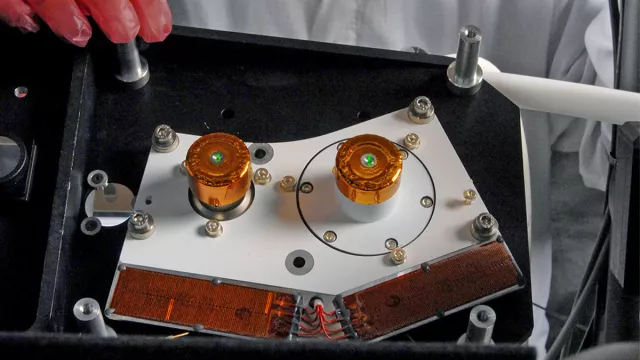The T2L2 instrument on board the Jason-2 satellite enabled a unique experiment to compare atomic clocks using laser pulses.
Key information
| Mission | Compare atomic clocks and synchronize them using laser signals |
|---|---|
| Domain | Science |
| Launch date | 20 June 2008 |
| Partners | CNRS, Observatoire de la Côte d’Azur (OCA), SYRTE |
| Where | CNES, OCA, Jason-2 satellite |
| Lifetime | 10 years |
| Status | Completed |
Key figures
- 800 million timestamps between 2008 and 2017
- 150 picoseconds uncertainty on time-transfer measurements
- 10-MHz internal clock frequency
- 17 ILRS ground stations
Key milestones
- 10 October 2019: End of Jason-2 mission
- 4 April 2018: T2L2 instrument shut down
- 31 December 2017: End of T2L2 mission
- 20 June 2008: T2L2 launched aboard Jason-2 satellite
- 22 May 2006: Flight model delivered to Thales Alenia Space
Project in brief
Atomic clocks are regularly compared to synchronize them or gauge their performance. This involves a ‘time transfer’ operation based on transmitting electromagnetic signals from satellites to the clocks being compared, which may be in space or on the ground.
Using optical signals rather than the microwave signals used until now could yield a gain in accuracy of one to two orders of magnitude. To demonstrate this, the Time Transfer by Laser Link experiment (T2L2) used a space instrument built by CNES flying on the Jason-2 satellite in combination with a ground network of laser-ranging stations linked to very-high-quality atomic clocks.
The principle behind the experiment was based on propagating laser pulses between clocks to be synchronized. Each ground laser-ranging station transmitted a train of pulses to Jason-2. The T2L2 instrument detected and timestamped these light pulses, while a retroreflector relayed them back to the stations. With these three timestamps—transmission, arrival at the satellite and return—it was possible to calculate the time difference between the two clocks.
From 2008 to 2017, the T2L2 instrument executed some 800 million timestamps, showing that it is possible to remotely compare clocks with a degree of uncertainty better than 150 picoseconds. The clock frequency of the DORIS oscillator on Jason-2 was also validated with unprecedented precision. But above all, T2L2 has paved the way for new experiments, notably for the future European Laser Timing (ELT) link that will be part of the Atomic Clock Ensemble in Space (ACES) scheduled to be launched to the International Space Station in 2025. The T2L2 experiment finished in 2017.
CNES’s role
T2L2 was developed by CNES in partnership with the GéoAzur laboratory at the Observatoire de la Côte d'Azur (OCA), with the PI, Etienne Samain.
CNES was system and instrument prime contractor. Besides science activities, OCA also played a key role in defining the instrument, as the design of detection and timing metrology functions drew on the heritage of prototypes previously developed and validated by the observatory.
The flight instrument was built by three industry contractors overseen by CNES.
The Instrument Mission Centre (CMI) hosted and operated by CNES was responsible for routine instrument operations, managing interfaces with the Jason-2 ground segment (telecommands and telemetry) and level 0 data processing.
The T2L2 experiment was exploited jointly by CNES and OCA.
CNES was responsible for instrument operations, i.e., monitoring it in orbit, uplinking telecommands and receiving, processing and distributing telemetry.
Contact CNES
Fundamental Physics subject matter expert
Martin Boutelier
E-mail: martin.boutelier at cnes.fr


